
North and South Korea have been at odds since the peninsula was partitioned by the United States and the Soviet Union in 1945. What was ended to be a temporary split has endured for almost eight decades. The two nations are technically still at war though active hostilities ended with the 1953 armistice. Both sides continue to invest heavily in their armed forces and maintain the most militarized border in the world. This article examines the military strengths and weaknesses of the two Koreas.
Why This Matters

Until unification or a permanent peace deal is agreed, Korea will forever be a potential geopolitical hotspot. A continuation of the Korean War is unlikely but can never truly be ruled out. With North Korea’s recent security pact with Russia, the stakes of this potential conflict are even higher than they were in the 1950s. Deterrence has never been more challenging or important in the Korean peninsula.
Manpower

North Korea
Total population: 26,072,000
Active military personnel: 1,280,000
Reservists: 560,000
South Korea
Total Population: 51,966,000
Active military personnel: 600,000
Reservists: 3,100,000
South Korea has almost exactly double the population of North Korea. The North has severe food insecurity that restricts its population growth. A devastating famine in the 1990s directly resulted from the lack of arable land and limited trade with the outside world. Around 40% of North Korea’s population is malnourished. South Korea does not suffer from food security but is facing a major demographic crisis in the next century. It has the lowest fertility rate in the developed world and is projected to halve by 2100.
North Korea has one of the largest standing armies in the world. Only China, India, and the United States have more active military personnel. To maintain such high numbers, North Korea has mandatory conscription for both men and women. North Korean men must serve for ten years, a 2003 reduction from 13 years. North Korea has reportedly had difficulties meeting its recruitment goals in recent years as young people are more reluctant to serve.
South Korea also has mandatory conscription but only for men. South Korean men must serve for 18-21 months though have some flexibility in when they complete their service. Even high-profile K-pop stars must complete their military service.
North Korea enjoys a roughly 2-to-1 advantage in active military personnel but that numerical advantage wouldn’t hold if hostilities broke out. South Korea’s much larger population and deep pool of trained reservists would come into play.
Naval Power
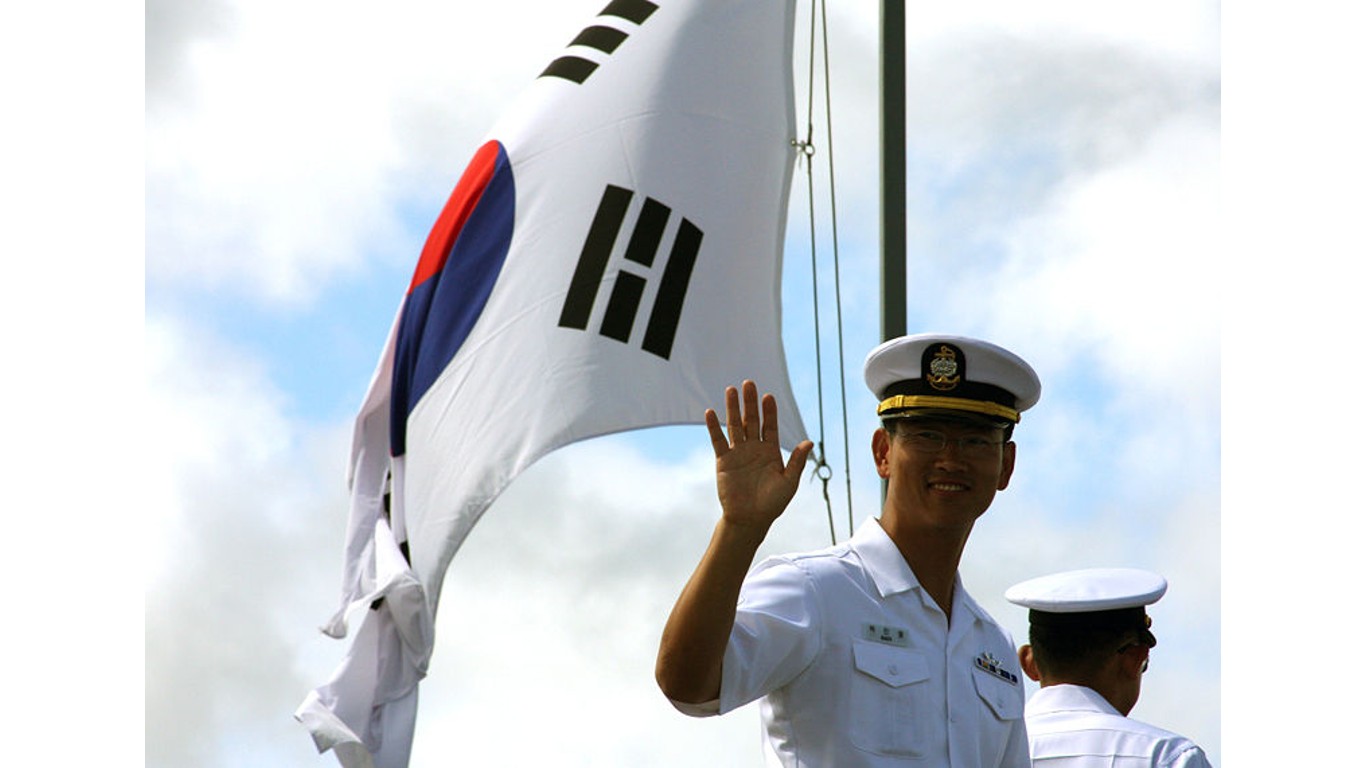
North Korea – 186 ships
19 submarines
2 frigates
7 corvettes
1 mine warfare
157 Offshore Patrol Vessels (OPV)
South Korea – 138 ships
18 submarines
12 destroyers
12 frigates
11 corvettes
11 mine warfare
64 OPV
10 amphibious assault
With 186 warships, North Korea boasts one of the largest navies in the world. However, most of Pyongyang’s warships are ancient OPVs with limited armaments and operational range. Its submarine fleet is similarly geriatric save for the ‘August 24 Hero’, a nuclear-armed submarine launched in 2023.
South Korea has one of the most powerful navies in the world. At 23.4 years, its median hull age is less than half of North Korea’s. They have a similar number of submarines but the South Korean fleet is much newer and better equipped. The ROK Navy boasts a healthy balance of locally-built surface vessels that are quite simply a class above North Korea’s aging fleet.
Fortunately for North Korea, sea power wouldn’t be a significant factor in a renewed conflict with the South. As Pyongyang shares a land border with its only real trade partners, Russia and China, it is not vulnerable to a naval blockade. South Korea’s economy is more dependent on maritime exports but the North Korean navy isn’t likely to pose a serious threat.
Air Power
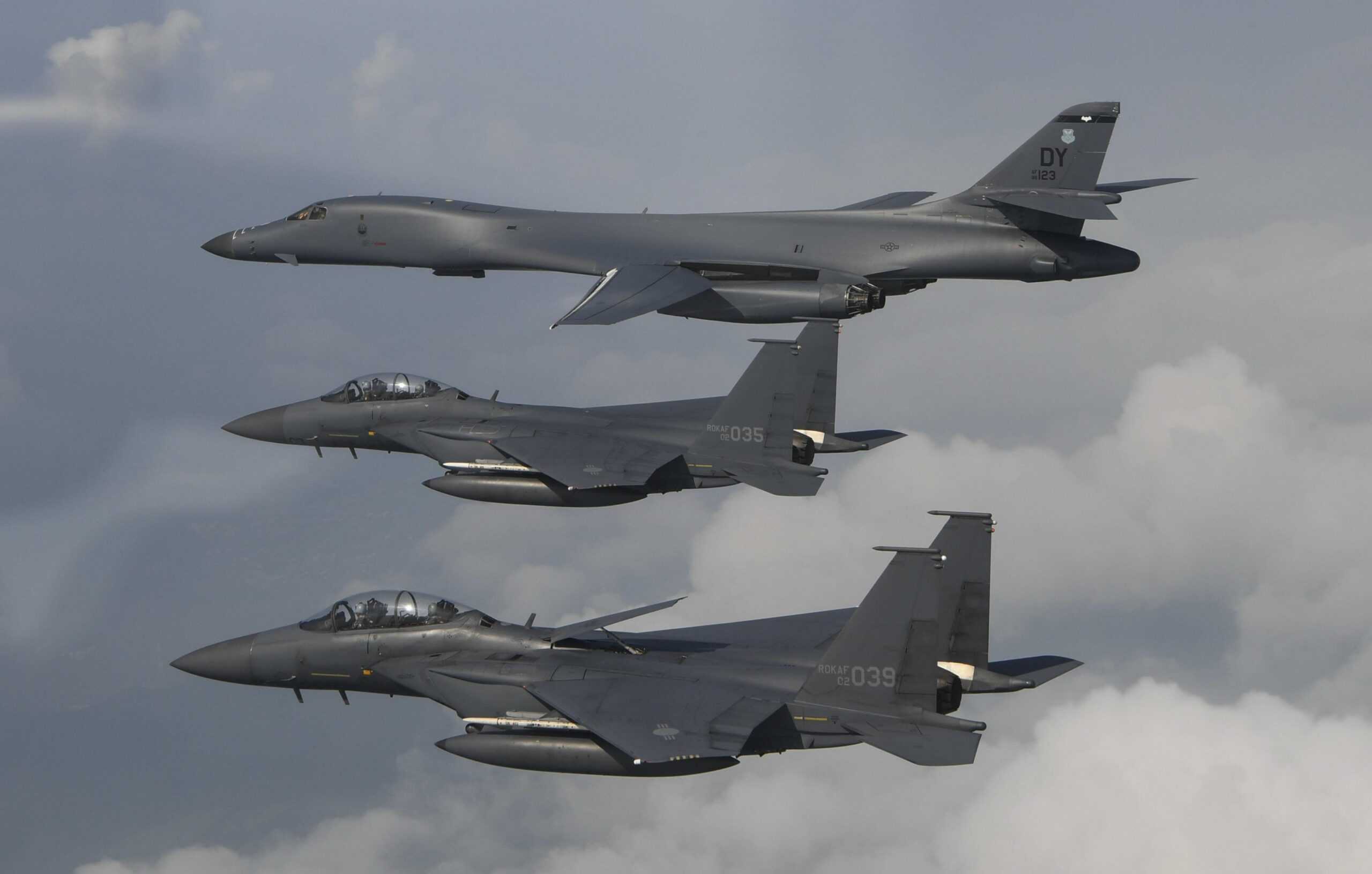
North Korea
Combat Aircraft
F-5 (Shenyang): 106
F-6: 97
F-7: 120
H-5: 80
MiG-21: 26
MiG-23: 56
MiG-29: 35
Su-7: 18
Su-25: 34
South Korea
Combat Aircraft
F-4E: 24
F-5E: 153
F-15K: 59
F-16C: 118
F-35A: 38 (on order: 25)
FA-50: 60
The Korean People’s Army Air Force (KPAA) and the Republic of Korea (ROK) Air Force have a similar number of combat aircraft. However, the KPAA’s jets are considerably older units purchased from China and the Soviet Union. Additionally, there are serious doubts much more than half of the available combat aircraft are fit for service.
On the other hand, the ROK Air Force is large and modern. As well as fourth and fifth-generation fighters purchased from the United States (with more on order), South Korea also has the FA-50, a light combat version of the T-50 training aircraft built by Korea Aerospace Industries in partnership with Lockheed Martin. South Korea enjoys a significant lead over North Korea in modern combat aircraft. Pyongyang’s pact with Russia may narrow the gap in the future but in a conflict with its neighbor, South Korea would enjoy air superiority.
Land Forces
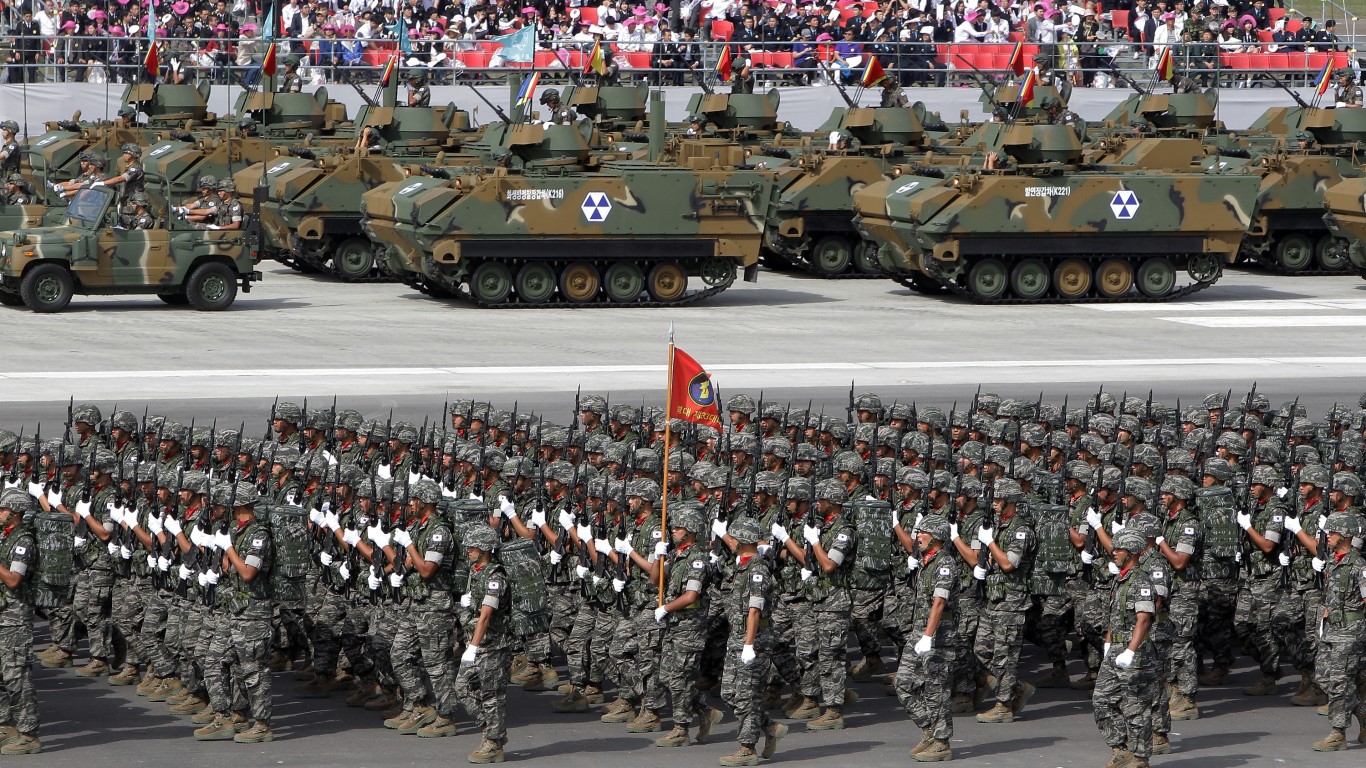
North Korea
Tanks: 5,845
Self-propelled artillery: 4,500
Rocket artillery: 2,920
Armored fighting vehicles: 24,696
South Korea
Tanks: 2,501
Self-propelled artillery: 3,189
Rocket artillery: 581
Armored fighting vehicles: 66,492
The KPA has a huge number of tanks, however, these are primarily Cold War-era models such as the T-54/55 (2000) and the locally-built Chonma (1200). North Korea does have a handful of modern locally-built tanks which were seen in military exercises in March 2024. Kim Jong-Un personally drove one of the tanks unofficially dubbed the M2020. The KPA’s main strength is its artillery, it has thousands of self-propelled and towed guns that could strike Seoul. With no real way to defend against artillery, the consequences inflicted upon such a densely populated area would be devastating.
South Korea is fast emerging as a world leader in armored vehicle production. Its K2 Black Panther is among the most advanced main battle tanks in the world. Poland recently agreed a deal for 1000 K2s. The ROK Army also fields a vast number of armored fighting vehicles of all types (including support and logistical vehicles). Korea’s mountainous terrain (70% of the total area) and dense urban areas are not conducive to maneuver warfare but South Korea holds a clear qualitative advantage in main battle tanks and armored vehicles.
Ballistic Missiles
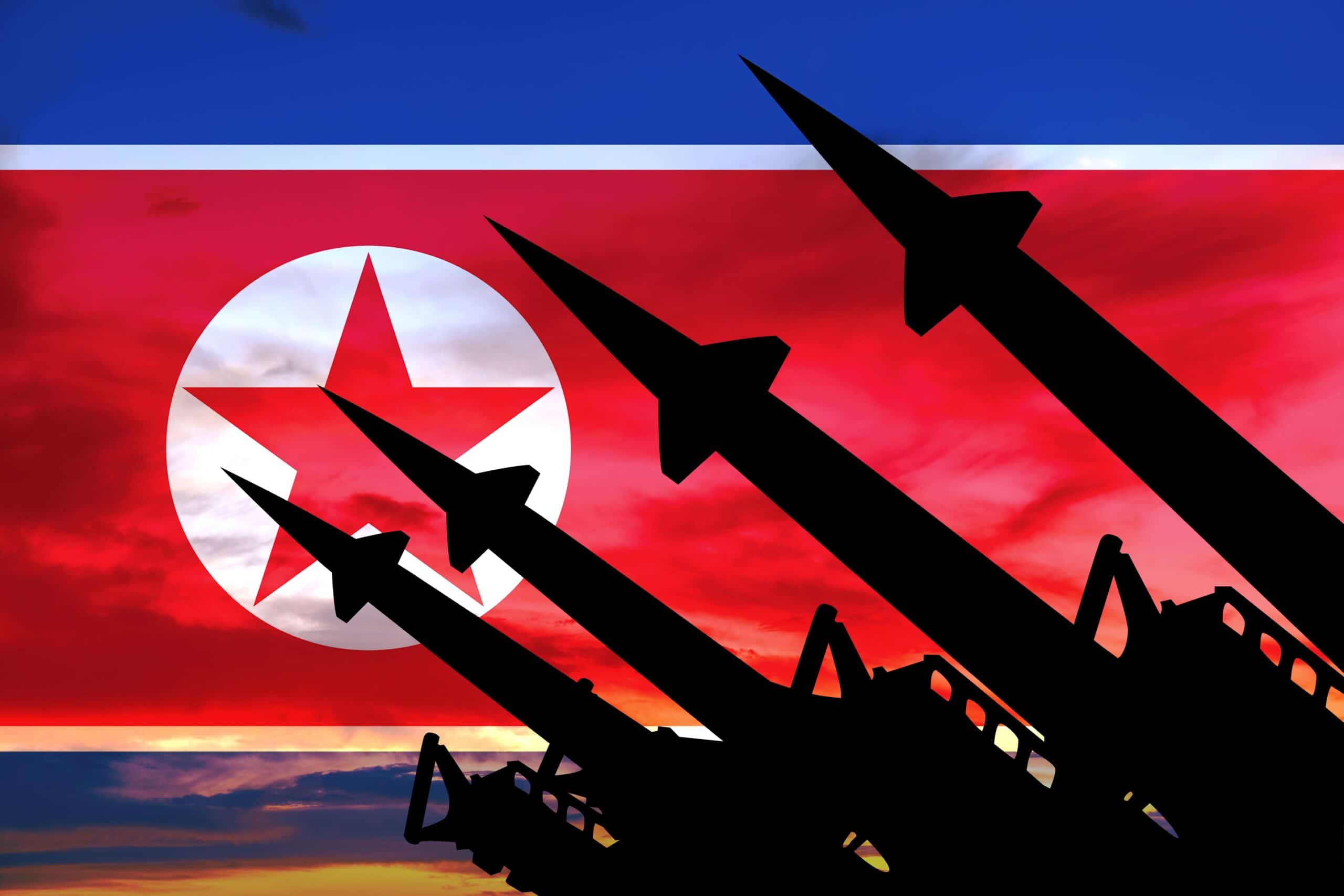
Precise details of North Korea’s nuclear weapons program are sparse but Pyongyang is estimated to have around 50 nuclear warheads. North Korea’s Hwasong-17 has a maximum range of 15,000km (9,300 miles) which would place the entire continental United States within its reach. North Korea conducted a record number of missile tests in 2022 as it announced a revision to its nuclear doctrine. Additionally, North Korea is suspected of having large stockpiles of chemical and biological weapons.
South Korea has ballistic missiles and doctrine for their use. The Korea Massive Punishment and Retaliation (KMPR) plan would be used in the event of a North Korean nuclear launch. The plan would involve special forces and Hyunmoo ballistic and cruise missile launchers specifically targeting North Korea’s leadership. How effective this plan would be in deterring North Korea is undetermined. It would depend heavily on the efficacy of South Korea’s intelligence services and how seriously North Korea would take that threat.
Operational Experience
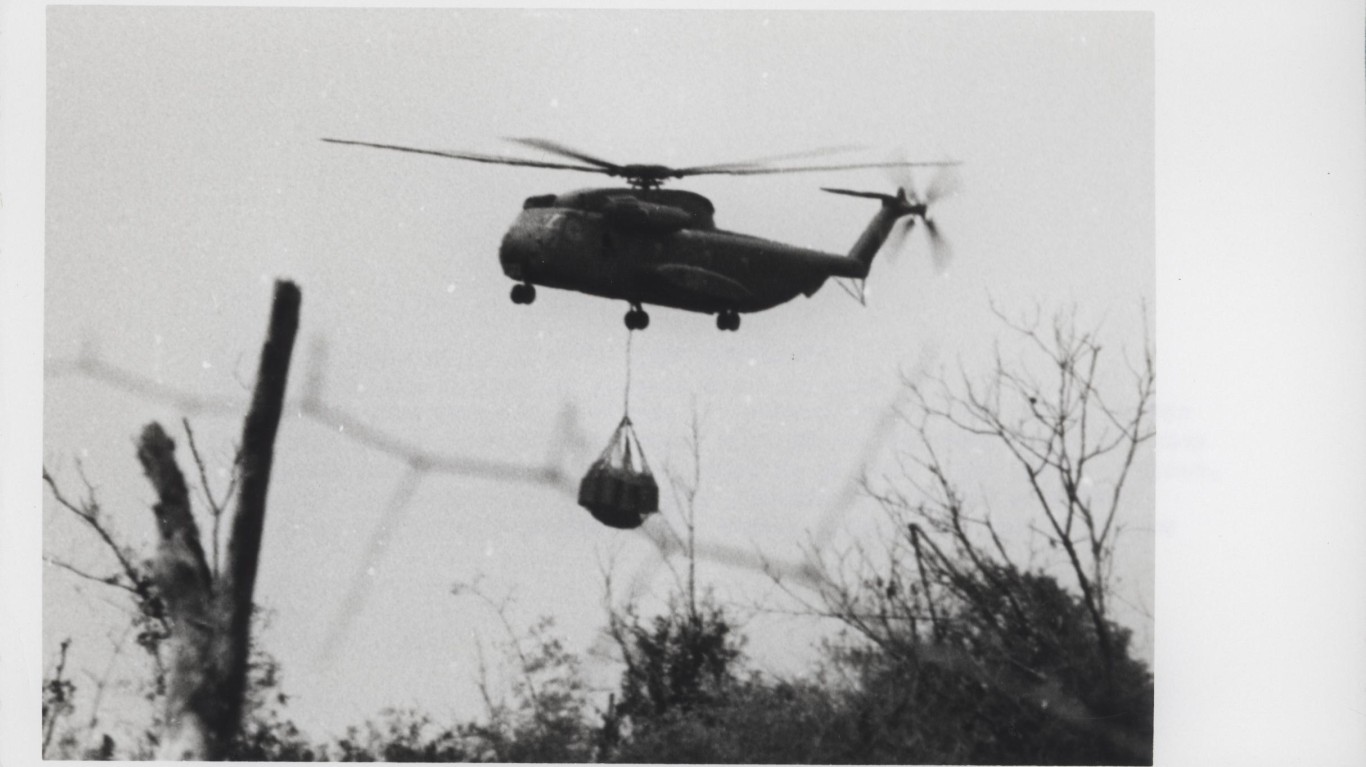
North Korea’s main military weakness, aside from the age of its equipment, is that it has not directly participated in combat since the Korean War ended. The security pact with Russia could offer a future opportunity to gain vital combat experience in Ukraine but that is still a remote possibility.
Conversely, South Korea has taken part in several conflicts since 1953. Seoul sent over 350,000 soldiers to Vietnam from 1964-73, a commitment second only to the United States. 5,000 South Koreans died in the conflict, their important role was viewed positively by their American allies. South Korea also supported American efforts in Afghanistan and Iraq. In 2005, South Korea provided the largest number of soldiers outside the USA and UK in the occupation of Iraq.
Conclusion

Numerically, there is not much to separate North and South Korea’s militaries. South Korea has a larger population and more reservists but with such a low fertility rate, that advantage will diminish rapidly in the coming century. North Korea has a large navy and air force. However, most of the equipment is from the Cold War era and is no match for the modern equipment fielded by the South Korean forces.
North Korea’s main advantage is in artillery and ballistic missiles. Whatever advantages South Korea possesses in the sea and air pale in comparison to the pain Pyongyang’s artillery and missiles could inflict if hostilities renewed. To deter North Korea from future aggression, South Korea may need to revise its KMPR plan.
Take This Retirement Quiz To Get Matched With An Advisor Now (Sponsored)
Are you ready for retirement? Planning for retirement can be overwhelming, that’s why it could be a good idea to speak to a fiduciary financial advisor about your goals today.
Start by taking this retirement quiz right here from SmartAsset that will match you with up to 3 financial advisors that serve your area and beyond in 5 minutes. Smart Asset is now matching over 50,000 people a month.
Click here now to get started.
Thank you for reading! Have some feedback for us?
Contact the 24/7 Wall St. editorial team.